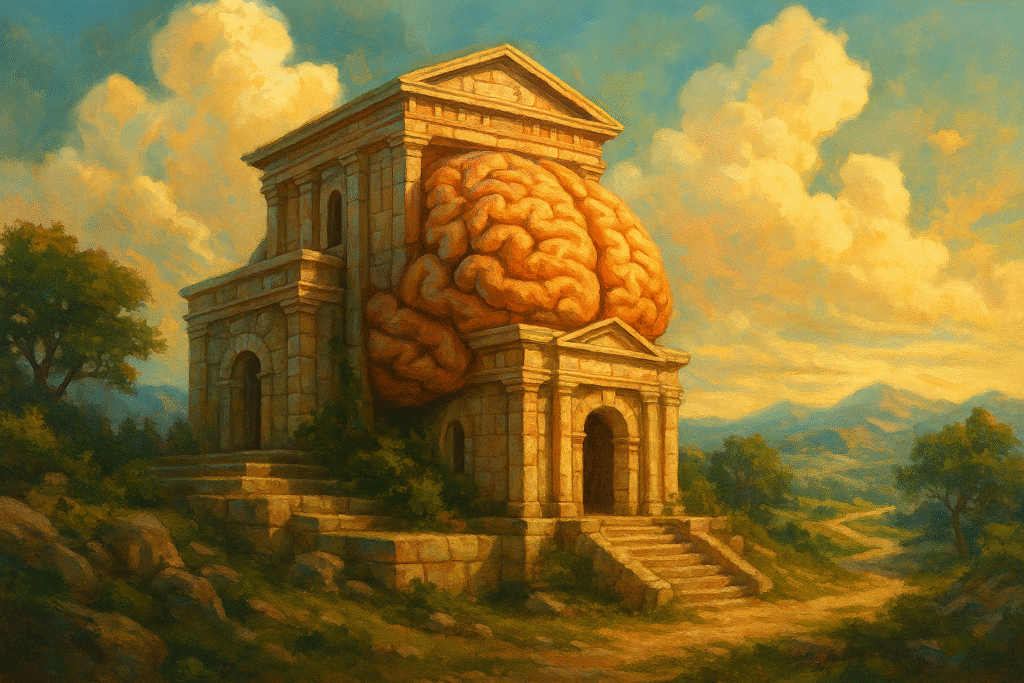
How I Learned to Remember Anything Using Memory Palaces
Previously, I would sit in the examination hall without knowing or recalling into details some facts and information my teachers and lecturers expected of me. It was not because I had not understood or learnt these facts and information but rather, I did not know how to assimilate them the right way. Sound familiar?
That all changed the day I discovered the ancient technique of memory palaces. It’s not just for memory champions or the super intelligent types. It’s for anyone who wants to learn faster, retain more, and feel confident in their ability to recall what matters.
Let me show you how it works.
Memory Palace.
The memory palace, also known as the method of loci, is one of the oldest and most reliable systems ever devised for remembering information. It’s roots stretch back to ancient Greece and Rome. Here, orators or public speakers used it to recall long speeches before the invention of paper notes or teleprompters. The principle is simple yet remarkably powerful. You use places you already know, for instance your home, school or any familiar route as mental “storage rooms” for ideas or facts you want to remember easily.
if you want the one pill solve all solutions, then I guess this would be my go-to for you.
The Core Idea
Human memory is strongly tied to location and visual imagery. We naturally recall places and scenes better than abstract words or numbers. You remember the journey to your house from school easily. You remember how the furniture in your room is arranged also easily. The memory palace technique takes advantage of this by converting invisible information into visual, spatial experiences. When you build a palace, you imagine yourself walking through a real space you know. This gives you the freedom of “placing” pieces of information in specific spots. For instance, on a table, by a door, next to a window, or at the top of a staircase. Later, when you mentally revisit those places, you can retrieve the stored information simply by seeing it in your mind’s eye.
How It Works in Practice
To create a memory palace, begin with a place that feels vividly familiar. Most people start with their own home or room because it already exists in clear mental detail. Picture yourself standing at the entrance. Assign a specific item or concept you wish to remember to that location. Then move to the next point, maybe a hallway, living room, or kitchen, then continue placing information in each area along a logical route. In a sequential yet logical manner as well as in a clockwise manner.
The key is Association. Each piece of information must be linked to something visual and distinct. For instance, if you need to remember The five Love Languages.
Choose a familiar place (like your living room) and assign each object in the living room to one love language.
On the Television, imagine someone giving compliments; this represents Words of Affirmation.
On the center table, visualize a wrapped gift; this stands for Receiving Gifts.
In the fridge, picture someone cleaning the fridge; this is Acts of Service.
On the sofa, imagine a warm hug between two people you know: symbolizing Physical Touch.
On the wall imagine a big clock made in the shape of love, representing Quality Time.
There you have it, the five love Languages captured and ever ready to be used in
Why It Works So Well
The memory palace transforms abstract data into sensory experiences, which is how the brain prefers to store long-term memories. Studies in cognitive psychology have shown that spatial memory; our ability to recall where things are, is one of the most stable forms of memory. When combined with imagination, it creates strong neural connections between objects, places, and ideas. This explains why people trained in the method can keep a whole academic semester work, Long term learning materials, or historical dates with apparent ease.
Building and Expanding Your Palaces
One thing people fail to realize is that, they need more than one memory palace. But the truth is this, once you master a single palace you can build many more. A student might use one for each subject, a professional for speeches or presentations, and a language learner for vocabulary. Here you can use a whole neighborhood, a street you know very well, your school, a favorite location, or a route you walk daily. Create imaginary structures such as castles, gardens, or even planets. Some people find it hard doing this. But obviously! Using a place you know very well does the job. The only rule is that the order of your locations must remain consistent so that your recall path is reliable.
From Ancient Art to Modern Learning
Though ancient in origin, the memory palace remains deeply relevant today. Many people still rely on it to achieve world records, while educators and psychologists recommend it to improve study habits and concentration. In an age of constant digital distraction, it offers a calm and imaginative way to focus, think visually, and retain knowledge without screens or apps.
In Essence
A memory palace is not just a trick; it is a way of organizing thought. By giving form to invisible ideas, it turns the act of remembering into an engaging journey through a world you create. Every corridor, every door, and every corner becomes a pathway to understanding; and every revisit strengthens your command of what you know.
Want to Learn This for Yourself?
I teach memory techniques like this and much more in my coaching program. Whether you’re a student, a professional, or just someone who wants to sharpen your mind, I can help you unlock your learning potential.
Register or book a free clarity call with me here.
Let’s make your mind unforgettable.
